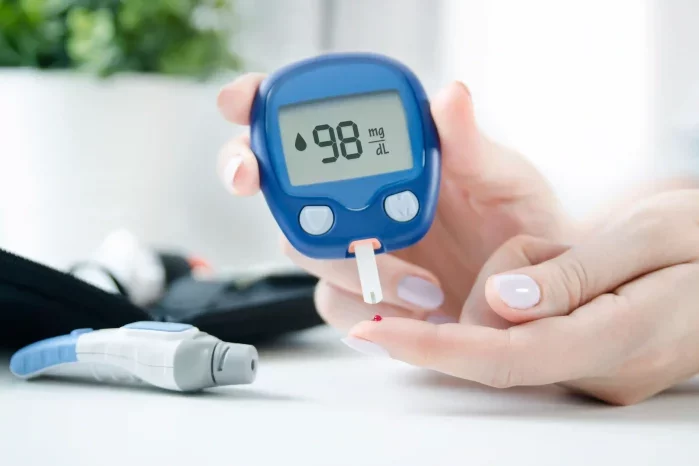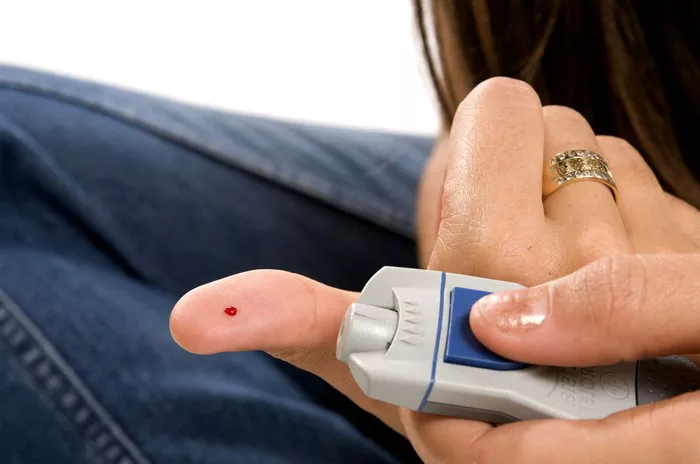Maintaining stable blood sugar levels is crucial for individuals with diabetes to prevent hyperglycemia and minimize the risk of complications. While long-term management strategies focus on dietary modifications, medication, and lifestyle changes, there are instances when immediate action is needed to lower blood sugar levels rapidly. In this comprehensive guide, we explore the foods and beverages that can be consumed immediately to lower blood sugar, providing practical tips and insights for managing glucose emergencies effectively.
Understanding Blood Sugar Spikes: Causes and Consequences
Blood sugar levels can fluctuate throughout the day in response to various factors, including dietary intake, physical activity, stress, illness, and medication. For individuals with diabetes, maintaining tight control over blood sugar levels is essential to prevent acute complications such as hyperglycemia (high blood sugar) and hypoglycemia (low blood sugar), as well as long-term complications such as cardiovascular disease, neuropathy, and retinopathy.
Hyperglycemia occurs when blood sugar levels rise above target range, typically defined as fasting blood glucose levels above 130 mg/dL or postprandial (after-meal) blood glucose levels above 180 mg/dL. Common symptoms of hyperglycemia include increased thirst, frequent urination, fatigue, blurred vision, and slow wound healing. If left untreated, hyperglycemia can progress to diabetic ketoacidosis (DKA), a life-threatening condition characterized by ketosis, metabolic acidosis, and dehydration.
In emergency situations where blood sugar levels are elevated and immediate intervention is needed, certain foods and beverages can be consumed to help lower blood sugar quickly and mitigate the risk of complications.
Foods and Beverages to Lower Blood Sugar Immediately
- Water: Staying hydrated is essential for blood sugar control, as dehydration can contribute to elevated blood glucose levels. Drinking water helps to dilute the concentration of glucose in the bloodstream and supports kidney function in removing excess sugar through urine.
- Apple Cider Vinegar: Consuming apple cider vinegar (ACV) has been shown to improve insulin sensitivity and reduce postprandial blood sugar levels in some studies. Dilute 1-2 tablespoons of ACV in a glass of water and drink it before meals to help lower blood sugar spikes.
- Cinnamon: Cinnamon contains compounds that may improve insulin sensitivity and lower blood sugar levels. Sprinkle cinnamon on foods such as oatmeal, yogurt, or fruit, or brew cinnamon tea by steeping cinnamon sticks in hot water.
- Fiber-Rich Foods: High-fiber foods such as non-starchy vegetables, legumes, and whole grains can help slow down the absorption of carbohydrates and stabilize blood sugar levels. Incorporate fiber-rich foods into meals and snacks to promote satiety and prevent postprandial spikes.
- Protein: Consuming protein-rich foods such as lean meats, poultry, fish, tofu, eggs, and Greek yogurt can help stabilize blood sugar levels and promote feelings of fullness. Include protein at each meal and snack to balance carbohydrate intake and minimize glycemic fluctuations.
- Green Tea: Green tea contains antioxidants and polyphenols that may improve insulin sensitivity and reduce blood sugar levels. Drink unsweetened green tea throughout the day as a refreshing and healthful beverage option.
- Chia Seeds: Chia seeds are rich in soluble fiber, which forms a gel-like substance in the digestive tract and slows down the absorption of carbohydrates. Add chia seeds to smoothies, yogurt, or oatmeal to help stabilize blood sugar levels.
- Low-Glycemic Index (GI) Foods: Choose low-GI foods such as non-starchy vegetables, whole grains, nuts, seeds, and berries, which are digested and absorbed more slowly, resulting in gradual increases in blood sugar levels.
Meal Ideas for Immediate Blood Sugar Control
- Vegetable Omelet: Prepare a vegetable omelet with eggs, spinach, bell peppers, tomatoes, and onions. Serve with a side of avocado for healthy fats and additional fiber.
- Salmon Salad: Enjoy a salmon salad with mixed greens, cucumber, cherry tomatoes, and avocado. Dress with olive oil and lemon juice for added flavor and healthy fats.
- Greek Yogurt Parfait: Layer Greek yogurt with berries, chia seeds, and a sprinkle of cinnamon for a nutritious and satisfying snack.
- Quinoa Bowl: Prepare a quinoa bowl with roasted vegetables, chickpeas, and feta cheese. Drizzle with olive oil and lemon juice for a flavorful and fiber-rich meal.
- Tuna Salad Wrap: Fill a whole wheat wrap with tuna salad, lettuce, cucumber, and shredded carrots. Roll up tightly and enjoy as a quick and convenient meal option.
Tips for Managing Blood Sugar Emergencies
- Monitor Blood Sugar Levels: Check blood glucose levels regularly using a glucometer or continuous glucose monitoring (CGM) system to track changes and trends in blood sugar levels.
- Be Prepared: Keep emergency supplies on hand, including fast-acting carbohydrates (e.g., glucose tablets, juice, or candy) to treat hypoglycemia, as well as protein-rich snacks to help stabilize blood sugar levels.
- Seek Medical Attention: If blood sugar levels remain elevated despite dietary interventions or if symptoms of hyperglycemia persist or worsen, seek medical attention promptly for further evaluation and management.
- Follow Up with Healthcare Provider: After addressing acute blood sugar spikes, follow up with your healthcare provider to review your diabetes management plan, make any necessary adjustments to your treatment regimen, and discuss strategies for preventing future episodes of hyperglycemia.
Conclusion: Empowering Immediate Blood Sugar Control Through Nutrition
In emergency situations where blood sugar levels are elevated and immediate intervention is needed, certain foods and beverages can be consumed to help lower blood sugar quickly and mitigate the risk of complications. By incorporating water, apple cider vinegar, cinnamon, fiber-rich foods, protein, green tea, chia seeds, and low-GI foods into your diet, you can stabilize blood sugar levels and promote overall health and well-being.
However, it is important to remember that dietary interventions are just one aspect of managing blood sugar emergencies. Regular blood glucose monitoring, medication adherence, physical activity, stress management, and ongoing communication with healthcare providers are also essential components of comprehensive diabetes care.
By staying informed, prepared, and proactive, individuals with diabetes can effectively manage blood sugar emergencies and minimize the impact of hyperglycemia on their health and quality of life. Through education, empowerment, and collaboration with healthcare providers, you can take control of your diabetes and live life to the fullest, one blood sugar level at a time.


























